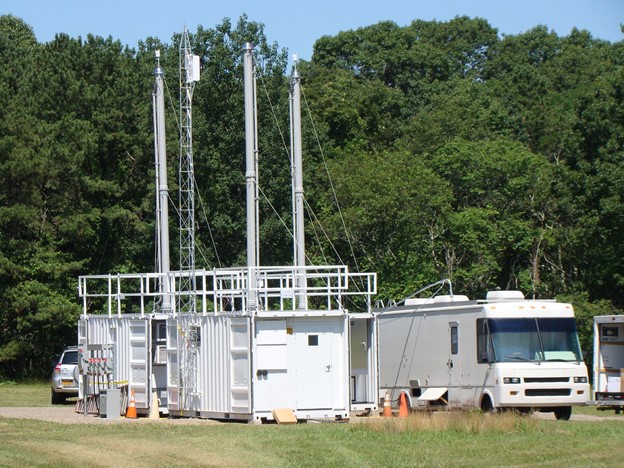East coast air masses influence cloud condensation nuclei activity
Submitter:
Mei, Fan — Pacific Northwest National Laboratory
Area of research:
Aerosol Properties
Journal Reference:
Science
A recent Intergovernmental Panel on Climate Change report pointed out that the largest uncertainties in global radiative forcing are mainly due to poor understanding of aerosol properties. Quantifying aerosol indirect effects requires understanding how aerosol particles can form cloud droplets. Earlier studies highlighted the importance of understanding the variability of organic hygroscopicity (korg), the ability of carbon-based atmospheric particles to attract water, and accurately representing it in climate models. However, field measurements of organic hygroscopicity and its variation with other factors remain quite limited. This study provides measurements of cloud condensation nuclei (CCN) size distribution and the CCN-activated fraction of size-resolved aerosols at a rural site on Long Island. The study also evaluates airmass influences on the CCN activities and links variations in aerosol properties to organic oxidation level and volatility.
Impact
This study provides valuable, but scarce, field measurements of organic hygroscopicity and how it varies with the oxidation level and volatility of different organic species. Additional field measurements confirm that the variation of korg with the oxygen to carbon (O:C) ratio agrees with theoretical predictions as well as results from previous laboratory and field studies. The above results provide new information to understand atmospheric processes and therefore help researchers constrain global estimates of radiative forcing.
Summary
This work used measurements to study CCN activity and how it varies with organic oxidation level and volatility. The measurements were obtained from July 15 to August 15, 2011, during the Aerosol Life Cycle Intensive Observation Period (ALC-IOP) supported by the Atmospheric Radiation Measurement user facility. The researchers examined aerosol properties, including aerosol total number concentration, CCN spectrum, and CCN hygroscopicity, for four air mass types that represent different ambient aerosol emission sources, transformation pathways, and atmospheric processes. The organic aerosol properties varied with processing temperature, controlled by a thermal denuder. The variation trends are different from previous laboratory experiments and field observations, which took place at higher thermal denuder temperatures. This study provides much-needed field measurements to link particle hygroscopicity variation to organic oxidation level and volatility.


